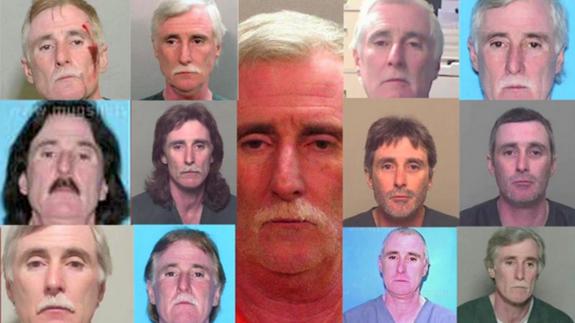
Donald Smith stands accused of murdering an 8-year-old girl 21 days after his release. He has a decade-long history of sex crimes. (Photo from a Sun-Sentinel video)
By Eric Barton
Florida Center for Investigative Reporting
The title of a recent South Florida Sun-Sentinel investigation is the kind of headline that can give a parent chills: “Sex Predators Unleashed.” The subhead warns: “Florida sets rapists and child molesters free to strike again.”
If you’re thinking it sounds like hyperbole, continue on to the statistics that the investigation uncovered. Of sex offenders who have left prison since 1999, 594 have committed another sex crime, many within days after being released. The victims: 460 children molested, 121 women raped, and 14 killed.
The reporters who uncovered it, Sally Kestin and Dana Williams, began from a simple arrest, the kind of thing that might only make the briefs column in some newsrooms. Then they started digging. Kestin explained how the investigation came together in an email Q&A with the Florida Center for Investigative Reporting.
FCIR: How did you first get tipped off to the story?
Kestin: The idea for the series came from an arrest last summer in Palm Beach County. A convicted rapist who had been released from prison a month earlier was charged in another rape. I knew the state could have considered him for civil commitment under the Jimmy Ryce law but obviously had decided not to, leading to his release. And that made me curious: How many other sex offenders had been rejected under the Ryce law and went on to commit new sex crimes? Through a quick Google search, I discovered that the Department of Children & Families is in charge of deciding which offenders are too dangerous for release and should be committed under the law. My colleague, Dana Williams, submitted a public records request to the department for its Jimmy Ryce database.
FCIR: You obtained a database of inmates screened since 1999, more than 31,000 people. What did it take to process the data and glean conclusions from it? What kind of resources did you need?
Kestin: We then matched those sex offenders and the dates they were screened as potential predators with the Department of Corrections database of felony convictions. The result: hundreds of offenders had been convicted of new sex crimes after being considered under the law and let go. As Dana worked her magic on the data matching, I began digging into cases. What alarmed us was not just the scope of the problem but the heinous nature of many of the crimes these offenders had committed – after the state had a chance to stop them. Victims included a college student tortured to near death, a great-grandmother raped and shot in the face, an elderly woman sexually assaulted in her home, her throat slit by her attacker.
FCIR: The investigation discovered that 594 men in the sexual predator database committed a new sex crime. That’s staggering. What did you think when you first figured this out?
Kestin: Delving into these cases, tracking down the victims and hearing their stories was emotionally challenging. But we knew this was an important story, and the details of these cases would help convey the impact. I also wanted to hear from the rapists and child molesters directly and sent letters to more than 30 inmates. To my surprise, about half responded. In one prison interview, a twice-convicted rapist told me he never should have been released the first time. “This is where I belong. Some of us just don’t belong in society. I mean, I’m being honest. I don’t.’’ That interview still gives me chills.
FCIR: When the dust clears, what’s next for the two of you?
Kestin: We’ll be following this story for awhile, so stay tuned.
